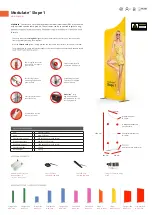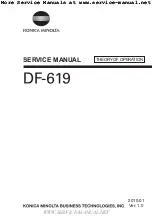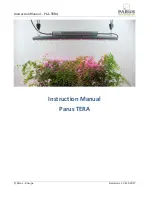
Section 3: Operating Procedures
1/25/21
STB0554 & STB0560 Snow Trip Blade 301-701M
17
Pre-Start Checklist
Hazard control and accident prevention are dependent
upon the awareness, concern, prudence, and proper
training involved in the operation, transport, storage, and
maintenance of the Snow Trip Blade. Therefore, it is
absolutely essential that no one operates the Snow Trip
Blade unless they are age 16 or older and have read, fully
understood, and are totally familiar with the Operator’s
Manual. Make sure the operator has paid particular
attention to:
Perform the following inspections before using your
Snow Trip Blade.
General Safety Information
DANGER
!
To prevent serious injury or death:
•
Protect against equipment falling unexpectedly. Lower
blade to ground or securely block blade up with blocks
before servicing or working under and around the unit.
•
Do not drive close to ditches, retaining walls, drop-offs,
water, etc. Rollover due to a cave-in or mishap could result.
•
Keep clear of trip springs and cutting edge. Do not attempt
to free cutting edge by hand if it is jammed in the tripped
position. The cutting edge can suddenly spring back due to
a high return spring load.
•
Do not disassemble the cutting edge or trip springs while
trip springs are loaded. The sudden release of this force can
cause great bodily harm.
Operating Checklist
Check
Page
Read & follow all safety rules & safety decals
carefully.
Refer to “Important Safety Information”.
1
Make sure all guards and shields are in place.
Refer to “Important Safety Information”.
1
Read & follow hook-up & preparation
instructions.
Refer to “Section 1: Assembly & Set-up”.
Read & make all required adjustments.
Refer to “Section 2: Adjustments”.
Read and follow all operating procedures.
Refer to “Section 3: Operating Procedures”.
Read & follow all maintenance instructions.
Refer to “Section 5: Maintenance &
Read & follow all lubrication instructions.
Refer to “Lubrication Points”.
Check the Snow Trip Blade initially and
periodically for loose bolts and pins.
Refer to “Torque Values Chart”.
Section 3: Operating Procedures
WARNING
!
To prevent serious injury or death:
•
Perform scheduled maintenance. Check for loose
hardware, missing parts, broken parts, structural cracks,
and excessive wear. Make repairs before putting the
•
Allow only persons to operate this attachment who have
fully read and comprehended this manual, who have been
properly trained in the safe operation of this attachment,
and who are age 16 or older. Serious injury or death can
result from failure to read, understand, and follow
instructions provided in this manual.
•
Never carry riders on the attachment or power machine.
Riders can obstruct the operator’s view, interfere with
controls, be pinched by moving components, become
entangled in rotating components, struck by objects, thrown
about, fall off and be run over, etc.
•
Always dress to stay warm in cold weather. Never allow
body or extremities to become too cold. Use a cab to provide
protection against the cold. Go inside a heated area to
warm-up when getting too cold.
•
Make sure safety labels are installed in their proper
location and are in good condition before operating the
attachment. Read and obey all instructions on the labels.
•
Check hitch fit-up frequently. An improper fit-up can cause
the attachment to come loose from the loader hitch plate
•
Do not alter attachment or replace parts on the attachment
with other brands. Other brands may not fit properly or
meet OEM specifications. They can weaken the integrity
and impair the safety, function, performance, and life of the
attachment. Replace parts only with genuine OEM parts.
•
Avoid hitting solid objects with this attachment. Solid
objects can damage equipment and throw operator forward
causing loss of control, bodily injury, or death.
•
Make sure controls are all in neutral position or park before
•
Always exercise safety, courtesy, and common sense. Be
aware of pedestrian and vehicle traffic. Check blind spots
before moving equipment. Move snow during low-traffic
hours.
•
Do not use the blade to move undisturbed soil, heavy
materials, gravel, rocks, or similar items.
•
Use the Snow Trip Blade for its intended purpose only.
•
Do not move snow at high speeds. High speeds can result in
sudden loss of control leading to damaged property,
equipment, and bodily harm.
















































